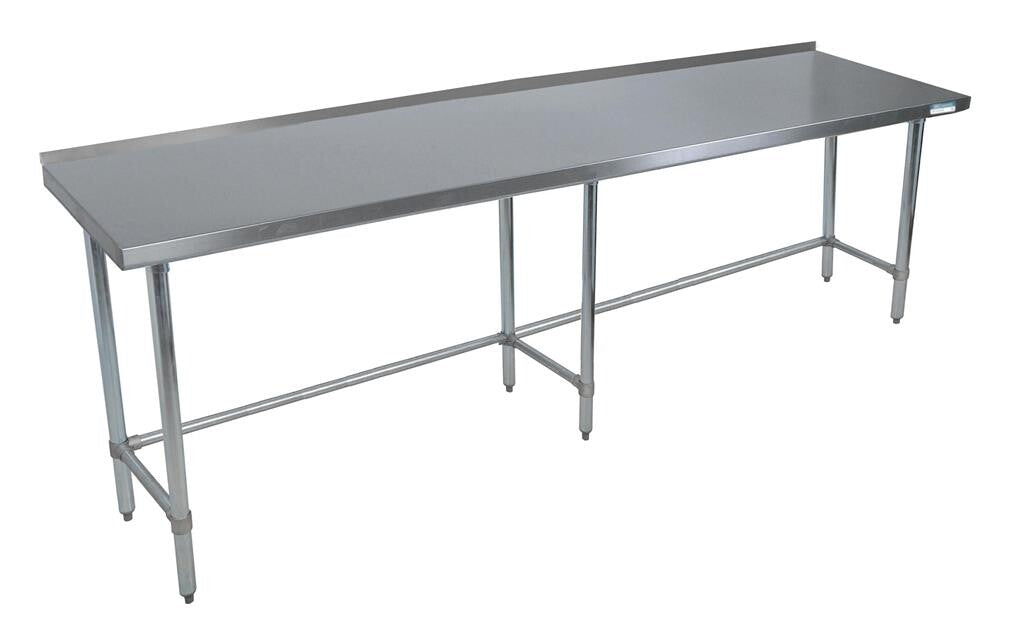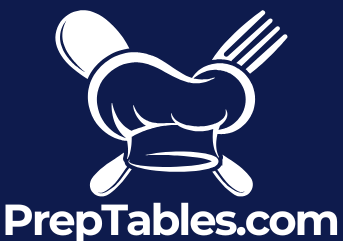
Prep Tables: Your Buying Guide
Share
- Prep tables are designed for food preparation, while work tables serve multiple kitchen tasks.
- Choose 16-gauge or 18-gauge stainless steel for durability in commercial use.
- Measure kitchen space to ensure the prep table fits and allows for staff movement.
- Consider workflow and user count when selecting table size for practicality.
- Key features include storage options, adjustable feet, and integrated cutting boards.
- A backsplash protects walls from messes and enhances functionality.
- Clean daily with warm, soapy water and a microfiber cloth for sanitation.
- Use stainless steel cleaner for tough stains, avoiding harsh chemicals and scrubbers.
Prep Tables Commonly Asked Questions
How do a prep table and a work table differ?
Although prep tables and work tables are frequently seen as synonymous, there are nuanced distinctions between them. "Prep tables" usually refer to tables used for preparing food. They often have built-in cutting boards, ingredient bins, or cool sections. On the other hand, "work tables" are more versatile. They have a strong stainless steel surface for many kitchen tasks. Ultimately, the most important factor is selecting a table that offers the features that align with your individual requirements.
Which gauge of stainless steel is ideal for a prep table?
Smaller gauge numbers signify thicker steel. For strong commercial use, it is best to use 16-gauge or 18-gauge stainless steel. This type of steel is strong and can resist dents and scratches. If you have a tight budget or need less durability, a higher gauge may be enough. Reflect on the level of wear and tear your table will endure to ensure you make the optimal selection.
What factors should I consider when selecting the appropriate size prep table for my kitchen?
Measure the space you have. Consider the size of the table and the room needed for staff to move around easily. Reflect on your workflow and the number of individuals who will be using the table at the same time. While a bigger table may appear attractive, it becomes impractical if it leads to a cramped kitchen. Focus on ensuring functionality and facilitating smooth movement.
What key characteristics should you consider when selecting a prep table?
Essential features vary based on your individual requirements. Shelves or drawers offer important storage solutions. For stability on uneven surfaces, adjustable feet are crucial. A backsplash can safeguard your walls from messes. Integrated cutting boards or cooling compartments can enhance efficiency for particular tasks. Reflect on your menu and operational flow to identify which features will be the most advantageous.
What are the best practices for maintaining cleanliness and sanitation of my stainless steel prep table?
It's crucial to clean daily using warm, soapy water along with a microfiber cloth. For more stubborn dirt, opt for a stainless steel cleaner, but steer clear of strong chemicals and rough scrubbers. Consistently sanitize with a recognized sanitizing solution, adhering to the manufacturer's guidelines. Keeping up with regular cleaning and sanitizing helps preserve the table's look and guarantees food safety.
